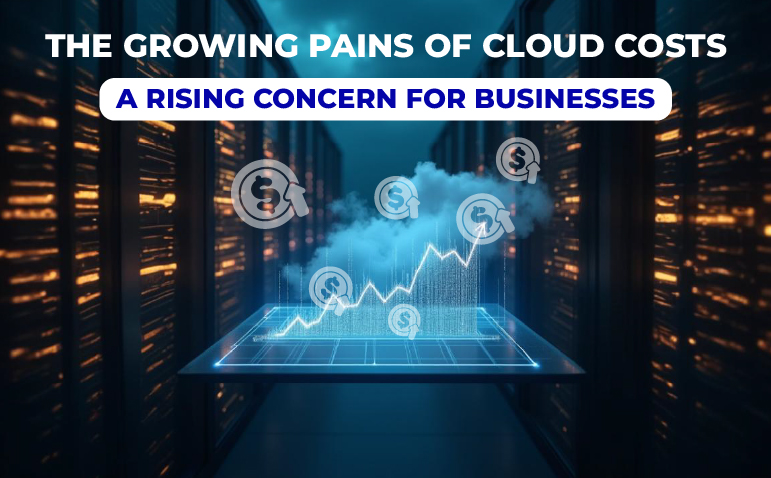Cloud computing has emerged as the cornerstone of modern digital transformation, empowering enterprises to innovate swiftly and scale with unprecedented efficiency. From cloud storage and infrastructure to AI-powered analytics, its advantages are vast and transformative. Yet, this increasing dependence on cloud services brings with it a pressing challenge—managing the soaring costs of cloud infrastructure. As we progress into 2025, escalating cloud expenditures have evolved into a critical concern for organizations across all sectors. Without disciplined and strategic cost management practices, businesses face the risk of overspending and forfeiting financial control.
This article delves into the growing pains associated with cloud costs, examines the core drivers behind these mounting expenses, and presents pragmatic strategies for cost optimization to ensure operational sustainability.
Cloud computing has fundamentally reshaped business operations, delivering unmatched scalability, agility, and cost-efficiency. However, with widespread adoption comes an undeniable truth: surging cloud costs are fast becoming a formidable challenge.
Why Are Cloud Costs Steeply Growing?
Several factors are propelling the steep incline in cloud expenditures:
- Escalating Demand for High-Performance Computing
The appetite for high-performance computing (HPC) and artificial intelligence (AI) workloads has grown exponentially, driving up costs associated with these resource-intensive capabilities. This is particularly pronounced in data-heavy industries, where infrastructure demands are vast and continually expanding. - Expanding Storage Needs
In an era where data generation is accelerating at breakneck speed, storage requirements have multiplied dramatically. Without streamlined and efficient data management strategies, storage costs can quickly spiral into a substantial financial burden. - Heightened Security Requirements
With the proliferation of cybersecurity threats and stricter regulations such as GDPR and HIPAA, the need for advanced security measures has intensified. For organizations handling sensitive data, robust security is indispensable—but it also necessitates meticulous budgeting. - Competitive Market Dynamics
An influx of cloud providers has intensified competition, yet paradoxically, pricing pressures and reduced discounts have driven overall costs upward. Selecting providers that balance affordability with performance is crucial for long-term cost containment. - Inflationary Impact
Rising global inflation continues to inflate operational expenses, including cloud infrastructure costs. Navigating these pressures calls for precision and proactive financial strategies.
The Ripple Effect: Business Implications
Unchecked cloud costs can have far-reaching consequences, including:
-
Eroded Profit Margins: Increased operational expenses diminish profitability and can weaken a company’s market position.
-
Budgetary Strain: Unexpected cost spikes can constrain budgets, limiting investments in innovation, talent development, and other strategic initiatives.
-
Strategic Reevaluation: Businesses may be compelled to reassess their cloud strategies, scrutinizing contracts, service tiers, and optimization tools to secure greater value.
Mitigating Rising Cloud Costs
To curb escalating expenses, organizations should consider:
-
Vigilant Monitoring: Regularly track usage metrics and fine-tune configurations to align costs with actual business needs.
-
Cost-Optimized Solutions: Select services and configurations that strike the ideal balance between capability and affordability, including tiered storage and right-sized compute instances.
-
Provider Negotiation: Leverage volume commitments, long-term contracts, and pricing incentives through effective negotiation and forecasting.
Conclusion
As cloud computing continues to evolve and digital reliance deepens, cost management has become a strategic imperative. In 2025, rising cloud expenditures transcend the realm of IT—they are a board-level concern with direct implications for innovation and growth. Organizations that fail to adopt robust cost optimization measures risk undermining their competitive advantage.
By fostering transparency in usage, maintaining ongoing cost analysis, and employing agile optimization strategies, businesses can achieve the delicate balance between peak performance and fiscal discipline—securing sustainable success in an increasingly cloud-first world.
Take Control of Your Cloud Costs with Protected Harbor
At Protected Harbor, we specialize in cost-effective cloud deployment solutions tailored to your business needs. With a decade of experience, our certified experts provide fixed, upfront pricing, ensuring no unexpected fees during your cloud migration. Our services focus on maximizing your cloud investment by reducing waste, optimizing resources, and delivering a clear ROI. We prioritize security and compliance, offering robust cybersecurity measures and regular audits to safeguard your data. Plus, with our 24/7 support and continuous monitoring, your cloud infrastructure will perform optimally as your business evolves.
Ready to optimize your cloud costs and enhance your cloud management? Contact Protected Harbor today!


